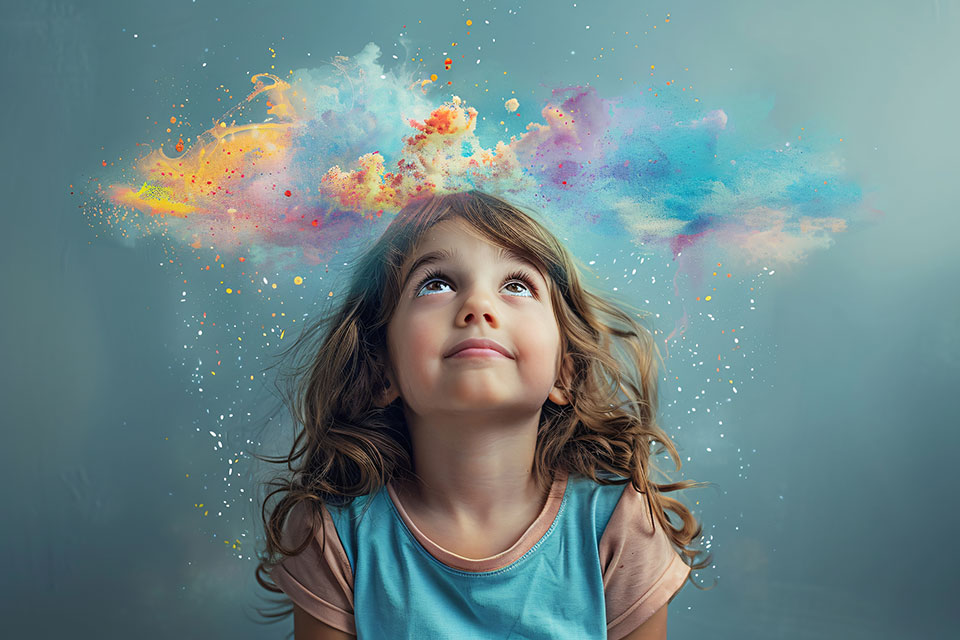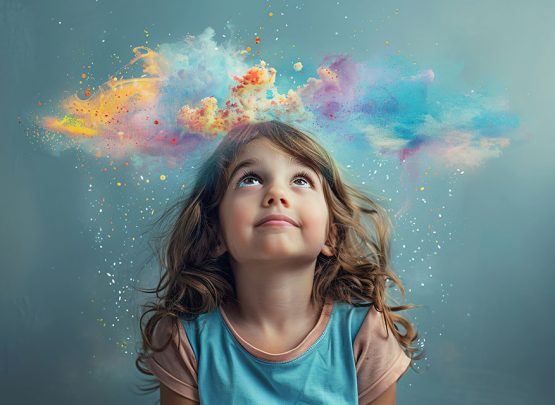Autism Spectrum Disorder (ASD) affects more than 700,000 people in the United Kingdom, according to the National Autistic Society.
With such a significant impact on individuals and families, understanding autism is essential.
This article aims to provide an in-depth overview of autism, including its definition, symptoms, causes, diagnosis, and resources.
Whether you’re a parent or just looking for knowledge, this guide offers comprehensive insights into Autism.
Definition of Autism
Autism is a life-long neurodevelopmental condition which affects an individual’s interaction with others, the world around them and how they respond to and understand sensory information.
Autism Spectrum Disorder (ASD) is a complex neurodevelopmental condition that manifests in various ways.
The term “spectrum” indicates the wide range of symptoms, skills, and levels of disability in individuals with Autism.
Key Characteristics include but are not limited to:
Social Interaction Difficulties
People with Autism often struggle with social cues, making it challenging to engage in typical social interactions and build relationships. They may have difficulty understanding body language, facial expressions, and tone of voice.
Communication Challenges
These can range from complete absence of verbal communication to having advanced vocabularies but struggling with the back-and-forth nature of conversations. Non-verbal communication, such as eye contact and gestures, can also be affected.
Repetitive Behaviours
Individuals with Autism often engage in repetitive movements or behaviours, such as hand-flapping, rocking, or strict adherence to routines. They may also have intense interests in specific topics or activities.
Sensory Sensitivities
Many people with Autism are highly sensitive to sensory inputs like sounds, lights, textures, or smells. This can result in discomfort or overstimulation in everyday environments.
These characteristics can vary significantly among individuals, making each person with autism unique.
Symptoms of Autism
Understanding the symptoms of Autism is crucial for early identification and intervention. Recognising the symptoms can help parents, educators, and healthcare providers support children with Autism more effectively. Autism can often be detected in young children as early as 18 months.
Early signs to look for include:
- Delayed Speech and Language Skills – Children might not babble by 12 months or speak single words by 16 months.
- Lack of Eye Contact – Limited or no eye contact when interacting with others.
- Minimal Response to Name – Children may not respond to their name by 12 months.
- Limited Gestures – Few gestures like pointing or waving by 12 months.
- Repetitive Movements – Engaging in repetitive behaviours like hand-flapping, rocking, or spinning objects.
- Lack of Interest in Social Games – Showing little interest in playing social games like peek-a-boo.
Early identification of these signs can lead to earlier interventions, which can significantly improve outcomes.
Core Symptoms
Autism affects individuals in various ways, but core symptoms generally fall into three main categories:
Communication
Verbal and Non-Verbal Challenges – Individuals may have delayed speech development, limited speech, or might not speak at all. They may also struggle with non-verbal communication, such as making eye contact, understanding body language, or using facial expressions appropriately.
Difficulty with Conversations – Even those with strong verbal skills may find it hard to maintain the natural flow of conversation, understand jokes or sarcasm, or engage in reciprocal communication.
Social Interactions
Challenges in Building Relationships – Individuals with Autism might find it difficult to make friends, share interests with peers, or engage in group activities.
Lack of Shared Enjoyment – They may not bring objects to show others or engage in social games.
Difficulty Understanding Social Cues – Struggling to interpret others’ feelings, intentions, and social signals.
Behaviours
Repetitive Movements or Behaviours – Engaging in repetitive actions such as hand-flapping, rocking, or arranging objects in specific ways.
Insistence on Sameness – A strong preference for routines and becoming distressed with changes in their environment or daily activities.
Intense Focus on Specific Interests – Having highly focused interests in particular subjects, activities, or objects.
Understanding these core symptoms can help in providing targeted support and interventions.
Recognising and understanding the symptoms of Autism is a critical step towards supporting those affected by ASD and helping them lead fulfilling lives.
Causes and Risk Factors
Understanding the causes and risk factors associated with Autism is a complex and ongoing area of research.
Both genetic and environmental factors are believed to contribute to the development of autism.
Genetic Factors
Genetics play a significant role in autism. Research indicates that multiple genes are involved in the development of Autism.
These genes may affect brain development and communication between neurons.
Studies have shown that if one identical twin has Autism, the other twin has a high likelihood of being affected as well, indicating a strong genetic component.
Additionally, specific genetic mutations have been linked to Autism, although these are not present in all individuals with Autism.
Environmental Factors
While genetics play a crucial role, environmental factors are also significant. These can include:
- Prenatal Factors – Complications during pregnancy, such as advanced parental age, exposure to certain medications, and maternal infections, have been associated with an increased risk of autism.
- Perinatal Factors – Issues during birth, including low birth weight, prematurity, and neonatal intensive care, may contribute to the development of Autism.
- Postnatal Factors – Although less conclusive, some studies suggest that environmental factors after birth, such as exposure to heavy metals or toxins, might play a role.
Research is ongoing to better understand the interaction between genetic and environmental factors in Autism development.
Research Findings
Research in Autism is continually evolving, with studies revealing new insights into the genetic and environmental underpinnings of Autism. Key findings have shown that:
Heritability – Autism has a high heritability rate, meaning it often runs in families.
Gene-Environment Interaction – The interplay between genetic predispositions and environmental exposures is crucial in understanding the full picture of Autism causation.
Brain Structure and Function – Differences in brain structure and connectivity patterns have been observed in individuals with Autism, providing clues about how the condition develops.
Diagnosis of Autism
The diagnosis for Autism is now based on the Dyad of impairments and these are:
1. Impairment in social communication and interaction
2. Restrictive, repetitive patterns of behaviour.
Diagnosing Autism involves a detailed evaluation of an individual’s behaviour and development. The process is guided by specific diagnostic criteria and involves multiple steps and professionals.
Diagnostic Criteria
The diagnosis of Autism relies on criteria set forth in the Diagnostic and Statistical Manual of Mental Disorders, Fifth Edition (DSM-5).
These criteria encompass persistent deficits in social communication and social interaction, which involve challenges in social-emotional reciprocity, nonverbal communicative behaviours, and difficulties in developing, maintaining, and understanding relationships.
Additionally, the DSM-5 criteria include restricted, repetitive patterns of behaviour, interests, or activities, such as stereotyped or repetitive motor movements, insistence on sameness, highly restricted interests, and hyper- or hypo-reactivity to sensory input.
Diagnostic Process
The diagnostic process typically involves several steps:
- Developmental Screening – Paediatricians often conduct early developmental screenings during regular check-ups to identify signs of Autism.
- Comprehensive Diagnostic Evaluation – If initial screenings suggest autism, a comprehensive evaluation is performed.
- Medical History and Physical Exam – Gathering detailed information about the child’s health history and conducting a physical examination.
- Standardised Assessments – Utilising standardised tools and tests to assess developmental and behavioural characteristics.
- Observations and Interviews – Conducting direct observations of the child and structured interviews with parents and caregivers.
Professional Roles
Diagnosing Autism involves a team of professionals, each playing a crucial role.
Paediatricians
As frontline healthcare providers, paediatricians are often the first to notice developmental concerns during routine check-ups or screenings. They play a crucial role in identifying red flags for Autism and referring families to specialists for further evaluation and diagnosis.
Neurologists
Neurologists specialise in assessing and treating disorders of the nervous system, including those that affect brain function and development. In the context of Autism diagnosis, neurologists evaluate neurological aspects, conduct examinations to rule out other conditions that may present with similar symptoms, and provide insights into brain functioning.
Psychologists/Psychiatrists
Psychologists and psychiatrists conduct comprehensive behavioural assessments to evaluate the individual’s social interactions, communication skills, and repetitive behaviours. They apply the diagnostic criteria outlined in the DSM-5 to determine whether the individual meets the criteria for autism spectrum disorder.
Additionally, they may assess for co-occurring conditions such as anxiety or ADHD that often accompany autism.
Speech and Language Therapists
Speech and language therapists specialise in evaluating and treating communication disorders.
In the context of Autism diagnosis, they assess the individual’s communication abilities, including speech production, language comprehension, pragmatic language skills, and nonverbal communication.
Speech and language therapists play a crucial role in identifying communication challenges and developing appropriate interventions to improve communication skills.
Occupational Therapists
Occupational therapists focus on promoting independence and improving functional abilities in daily life tasks.
For an Autism diagnosis, they assess sensory processing abilities, motor skills, and activities of daily living.
Occupational therapists evaluate how sensory sensitivities and motor challenges impact the individual’s participation in daily activities and social interactions, providing recommendations for environmental modifications and sensory integration interventions to support the individual’s overall development and well-being.
Each professional brings their expertise to ensure a thorough and accurate diagnosis.
How would you notice if your child had Autism?
Typically, some children who do not meet their early development assessments from the health visitor could be screened for Autism and if this was thought to be a possibility they would be referred to a paediatrician to carry out further assessments.
Other children meet their developmental milestones but as they progress through school, they appear to be different from their peers.
This can be struggles with friendships, anxiety about school, socially being very different and perhaps having a limited range of interest. When concerns about development come from both the home and the school children could be referred onto the Autism pathway to see if they meet criteria for diagnosis.
Autism Across the Spectrum
Autism is described as a spectrum because it encompasses a wide range of symptoms, skills, and levels of disability. This means that individuals with autism can exhibit very different behaviours and abilities. Some may have significant challenges that require substantial support, while others might live independently with minimal assistance.
The term “spectrum” captures the diversity of experiences and characteristics among those with autism.
The abilities and challenges faced by individuals with Autism can vary widely. Some common challenges can include:
- Communication – Some individuals may have limited or no spoken language, while others might have advanced vocabularies but struggle with conversational skills.
- Social Interactions – Social challenges can range from difficulty understanding social cues to profound difficulties in forming relationships.
- Behaviour – Repetitive behaviours, strict adherence to routines, and intense focus on specific interests are common. Sensory sensitivities can also vary, with some individuals being extremely sensitive to sounds, lights, or textures.
Therapy and Interventions
Exploring the diverse array of therapies and medical interventions aimed at addressing the unique needs of individuals with Autism.
Therapy
Behavioural therapies are among the most common interventions for Autism. These therapies aim to improve specific skills and behaviours.
Applied Behaviour Analysis (ABA) is a widely used therapy that focuses on improving specific behaviours, such as communication, social skills, and academics, through positive reinforcement.
Speech and language therapy helps individuals with autism improve their verbal, nonverbal, and social communication skills.
Occupational therapy assists individuals in developing the skills needed for daily living, such as dressing, eating, and interacting with others.
Medical Treatments
While there is no cure for Autism, some medical treatments can help manage symptoms:
Medications – Certain medications can help address specific symptoms, such as anxiety, depression, or hyperactivity. Commonly prescribed medications include:
- Antipsychotics
- Antidepressants
- Stimulants
Dietary Approaches – Some individuals with autism benefit from dietary changes or supplements, though these should be discussed with a healthcare provider.
Living with Autism
Families play a crucial role in supporting individuals with Autism by providing a nurturing environment that fosters growth and development. Here are some ways families can provide support:
Education and Awareness
Educating family members about Autism is essential for fostering understanding and acceptance within the family unit. By learning about the unique challenges and strengths associated with autism, family members can better support and advocate for their loved ones.
Accessing Services
Families can connect with local support services, therapy providers, and educational resources to ensure that individuals with Autism have access to the necessary interventions and support networks. This may involve collaborating with healthcare professionals, educators, and community organisations to create a comprehensive support plan tailored to the individual’s needs.
Creating a Supportive Environment
Establish routines, provide clear communication, and offer emotional support to help individuals with Autism thrive.
Community Resources
Communities offer valuable resources and support networks for individuals with Autism and their families.
Support Groups – Join local support groups or online communities to connect with others facing similar challenges and share experiences.
Recreational Programs – Explore recreational programs tailored for individuals with autism, such as sports teams, art classes, or social clubs.
Advocacy Organisations – Get involved with advocacy organisations that work to raise awareness, promote acceptance, and advocate for the rights of individuals with Autism.
Daily Life
Understanding the day-to-day experiences of individuals with Autism is essential for providing appropriate support.
Sensory Sensitivities – Be mindful of sensory sensitivities and provide a supportive environment that accommodates individual sensory needs.
Communication Strategies – Use clear and concise communication techniques, visual supports, and assistive technologies to enhance communication.
Routine and Structure – Establish predictable routines and provide structure to help individuals with Autism feel secure and organised in their daily lives.
Autism in Adulthood
The transition to adulthood presents distinctive hurdles for individuals with autism and their families, necessitating careful consideration and proactive planning.
Education and Employment
Delve into post-secondary education avenues, vocational training initiatives, and supported employment schemes to equip individuals with autism with the requisite skills and opportunities for meaningful career pursuits.
Independent Living Skills
Empower individuals with autism by imparting essential life skills like culinary proficiency, financial management, and adeptness in navigating public transportation systems. These skills lay the groundwork for fostering autonomy and self-sufficiency in adulthood.
Healthcare and Legal Considerations
Facilitate seamless access to crucial healthcare services and legal provisions, such as establishing guardianship arrangements or healthcare proxies. These measures are paramount in ensuring individuals with autism receive adequate support and protection as they navigate adulthood.
Employment and Independence
Attaining gainful employment and achieving independence are pivotal milestones for individuals with autism. Offer comprehensive job training programs, alongside tailored job coaching services and supported employment initiatives, to facilitate skill development and facilitate meaningful career pathways.
Housing Options
Explore diverse housing options, including supported living arrangements, independent living programs, and housing subsidies, to furnish individuals with Autism with secure and stable living environments conducive to their well-being and development.
Social Relationships
Foster inclusive social environments by encouraging participation in community activities, social skills groups, and peer support networks.
Cultivating social connections and friendships not only promotes social inclusion but also enhances overall well-being and quality of life for individuals with Autism.
Current Research and Future Directions
Ongoing research continually expands our comprehension of Autism and guides treatment strategies. Genetic studies delve into the intricate genetic underpinnings of autism, aiming to pinpoint potential risk factors and therapeutic targets.
Advanced neuroimaging techniques are employed to scrutinise brain structure and function in individuals with autism, pinpointing biomarkers associated with the disorder.
Furthermore, ongoing evaluation of various intervention strategies, including behavioural, pharmacological, and alternative approaches, aims to manage Autism symptoms and enhance quality of life.
Looking ahead, future trends in autism research hold promise for transformative advancements in diagnosis, treatment, and support services.
Early intervention initiatives concentrate on identifying and intervening during critical developmental periods to offer targeted support.
Precision medicine is poised to revolutionise treatment approaches, tailoring interventions based on individual characteristics, genetics, and biomarkers to optimise outcomes for those with Autism.
Technological innovations, encompassing artificial intelligence, virtual reality, and digital health platforms, are primed to revolutionise assessment, intervention, and support services for individuals with Autism.
Resources and Support
Accessing support organisations is crucial for individuals and families affected by Autism.
Here are some key organisations that provide support and information:
Educational Materials
Educational materials can offer valuable insights and guidance for individuals and families navigating Autism.
Books
- “The Complete Guide to Asperger’s Syndrome” by Tony Attwood,
- “Uniquely Human: A Different Way of Seeing Autism” by Barry M. Prizant,
- “The Reason I Jump: The Inner Voice of a Thirteen-Year-Old Boy with Autism” by Naoki Higashida.
Websites
- Autism Speaks Resource Library
- National Autistic Society Resources
- Autism Society Services Directory
Conclusion
In conclusion, understanding Autism is essential for fostering acceptance, support, and inclusion. By recognising the diverse needs and strengths of individuals across the Autism spectrum, we can create a more inclusive and supportive society for all.
Remember, knowledge is power, and seeking further information, support, and resources is key to making a positive difference in the lives of individuals with Autism and their families.
We encourage you to explore the resources mentioned in this article and to continue your journey of learning and understanding about Autism.
Whether you’re a parent, educator, healthcare professional, or individual on the spectrum, your efforts in seeking support, spreading awareness, and promoting acceptance can make a meaningful difference in the lives of those affected by Autism.
Final Thought
As Temple Grandin once said, “I am different, not less.”
Let us embrace the uniqueness of individuals with autism and work together to create a world where everyone is valued, accepted, and supported.




